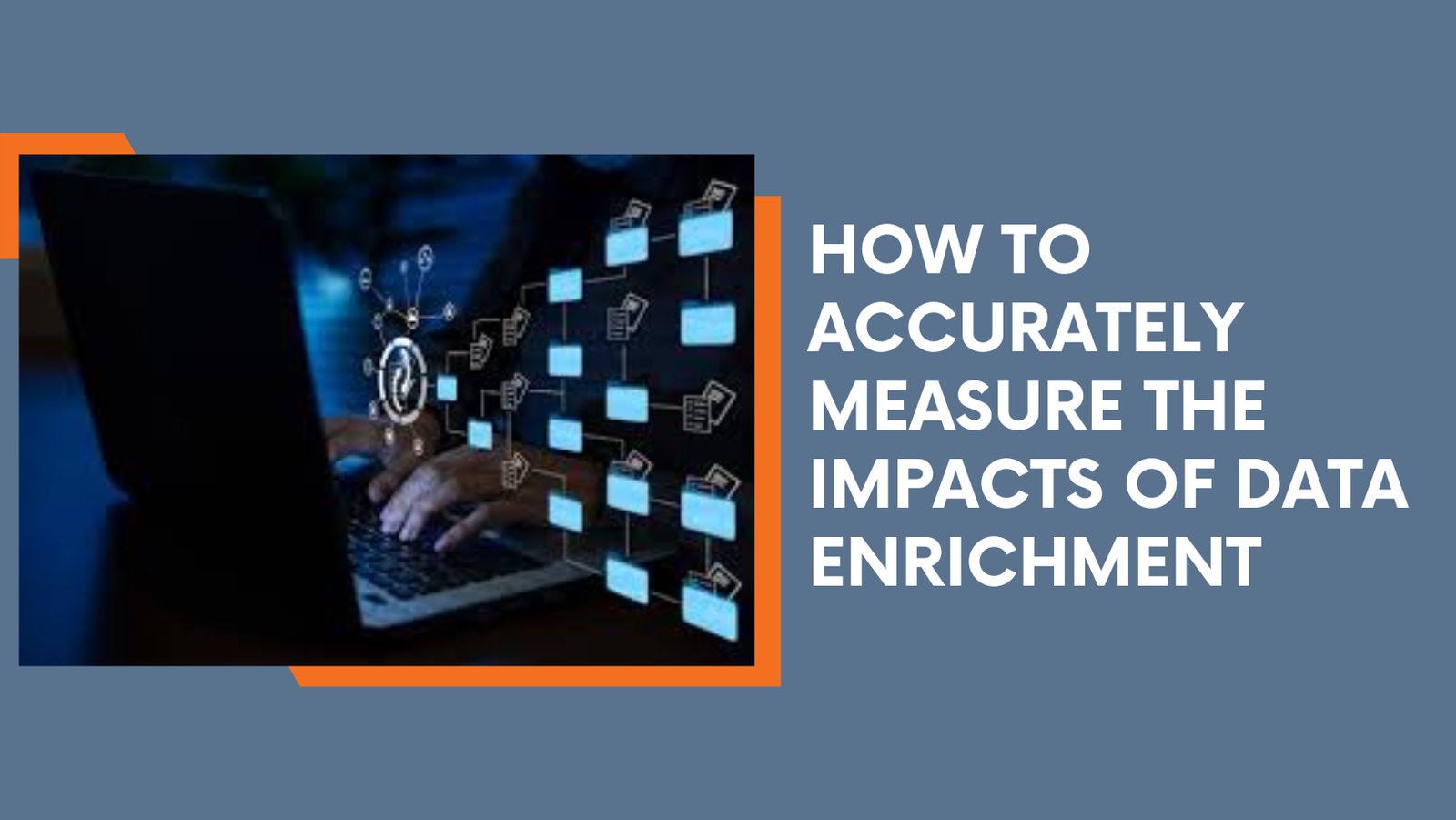How To Accurately Measure the Impacts of Data Enrichment
It is easy to assess the impacts data enrichment has had on your business operations, right? After all, one need only compare the results of pre- and post-data enrichment, be they in sales, customer satisfaction, or reduction in cost—right?
In any case, if we’re doing it effectively, do we even need to know its efficacy?
Wrong, wrong.
Data enrichment is a critical but tedious and time-consuming task. To be able to evaluate whether the effort is paying off or how much, measuring the impacts precisely is imperative.
To do this and do it well, we need to discern what to assess and then methodologically measure them. Then and only then will you know whether data enrichment efforts have been worthwhile.
Identifying What to Measure
All that glitters is not gold. Unless you identify what’s relevant and important, you could waste time and effort chasing sparkling objects that have no value—vanity metrics, in other words. These are often exciting and can give you an illusion of success. For instance, a one million ad impression may seem impressive, but it quickly loses its shine if there are just a hundred conversions.
To avoid chasing the wrong metrics—or worse, none at all—it is important to identify measurable and actionable metrics so you can accurately gauge the impacts of the efforts and reach your goals. This will provide clarity on the evaluation process, precision in measurement, and focus on where you need to reach.
So, what metrics or key performance indicators need to be measured? That depends on the goals your business has. But here are a few that would throw some light on the impacts of your data enrichment efforts.
- Accuracy rate: How accurate is the enriched data compared to the initial data set? What methods or tools were/can be used to validate the data?
- Completeness: What percentage of missing data has been filled? How can you ensure the enriched data has all the necessary information?
- Consistency: In what ways has the consistency in the dataset been improved and how can this be maintained?
- Customer segmentation accuracy: Has the accuracy and granularity of customer segments improved and how do you quantify it?
- Response rate: Has there been an uptick in response rate after enrichment? Are there other factors that may have accounted for the change?
- Conversion rate: Have you observed an increase in conversion rates? How much of it is due to enrichment?
- Time saved on data analysis: Has the team seen a reduction in time spent on analyzing data and has there been an improvement in the quality and quantity of insights derived?
- Operational efficiency: Have you noticed a reduction in costs and an increase in revenue? Have marketing and sales processes become more streamlined? Has resource allocation become more optimized?
These are some indicators that can help you judge whether your data enrichment and data cleansing efforts are effective and whether the consequent impacts are beneficial.
Outlining the overarching objective and identification of key metrics and parameters to assess is but half of the job—if even that. The full picture of the impacts of the data enrichment efforts will emerge only when you adopt a strategy or establish some methods to evaluate them.
Ways to Measure the Impact of Data Enrichment
Your measurements will only be as accurate, reliable, and useful as the methods and approaches you use for your assessment. It is therefore essential that you have a definite set of criteria. What these are, again, will depend on what you are looking to achieve. The rule of thumb is that your strategy should align with your business goals. These could be effective marketing, optimization of operations, or improving customer experience.
It may be pertinent to mention here the good old S.M.A.R.T. approach. The impacts you measure should be specific, quantifiable, and tied to your broader business goals. Plus, you need to steer away from vain and hollow metrics that have no substance in your measurements. (They may be relevant in other aspects, however.) For example, if you plan to evaluate (and increase) customer retention, then revenue figures, no matter how flattering, are just vanities.
Below are some ways to effectively measure the impacts of data enrichment.
-
Benchmarking and baseline assessment
Benchmark and baseline are two reference points against which you can assess the impacts of your data enrichment efforts. Benchmarking involves setting standards whereas baselining sets the initial state of metrics serving as points of comparison for future and past changes respectively. They provide a clear before-and-after picture allowing for more accurate evaluation. These therefore allow you to quantitatively assess the impact of data enrichment. They also provide a framework for evaluating the impacts and help ensure that the chosen metrics are aligned with the initial goals.
-
Tracking changes over time
For a nuanced understanding of how (or how much) data enrichment efforts impact performance over time, constantly tracking the changes progressively is necessary. Doing so also allows you to measure the impacts dynamically and adaptively. Additionally, by observing how the metrics change over time, you would be able to optimize your data enrichment approach based on what is yielding the most significant improvement.
-
A/B testing
A/B testing, also called bucket testing, lets you compare two or more versions of a variant—e.g., email, PPC ad—in a controlled setting and determine the relative performance. This simple but effective method is a terrific way to directly assess data enrichment impact on specific metrics. This provides you with empirical data on how or whether enriched data influences behavior and impacts outcomes.
-
Customer feedback and satisfaction surveys
For gauging the qualitative impacts of data enrichment, customers’ feedback can be resourceful. They can reveal areas where the enriched data fell short and need further improvement. You may also proactively seek responses from them for a more thorough evaluation by conducting surveys.
-
Segmentation and personalization effectiveness
One of the main, if not the primary, aims of data enrichment is to better segment the data for effective targeting and personalization. Whether the enriched data has had a noticeable impact can be gauged by measuring performance indicators such as churn rates, conversion rates, and customer lifetime value.
Measuring these provides greater insight into how data enrichment enhances the relevance of your communications and outreach. It helps you quantify the impacts of enriched data on customer engagement, conversion rates, and long-term value.
Conclusion
To make the most of data enrichment—not just to maximize its impact but also to optimize the process of enrichment itself—measuring its payback is essential.
You must be prepared to dedicate a team to this tedious and costly affair. Or, you may choose to outsource to a third-party data enrichment service provider to get rid of the tedium and save costs. However you do it, how well it’s been done can only be gauged by measuring its impacts using relevant metrics. But measurement is moot if the cause of the effect you’re evaluating is neglected.

















